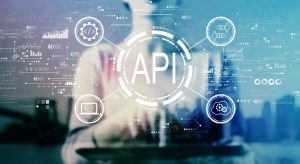In today’s digital age, Application Programming Interfaces (APIs) are the backbone of modern software development, enabling seamless communication between different applications and systems.
Whether powering a startup’s mobile app or facilitating integrations for a large enterprise, APIs play a critical role in delivering fast, reliable, and scalable solutions. But what makes an API truly successful? Beyond just writing clean code, two crucial steps that often determine an API’s success are wireframing and modelling.
These processes provide the structure and clarity needed to design an API that is not only functional but also intuitive, scalable, and easy to use.
This blog will explore the importance of wireframing and modelling in API development, discuss best practices, and provide insights into tools and techniques that help ensure API success.
What is API Wireframing and Why is it Important?

API wireframing is the practice of creating a visual representation of an API’s structure, including its endpoints, resources, and key functionalities. It serves as a blueprint that outlines how the API will function, helping developers and stakeholders visualize its architecture before any actual coding begins.
Wireframing is crucial for several reasons:
- Clarity and Alignment: Wireframes provide a clear and understandable map of the API’s design, ensuring that all stakeholders, including developers, project managers, and clients, are aligned on the intended functionality.
- Early Detection of Issues: By outlining the API’s structure visually, wireframing allows for early identification of potential issues or flaws in the design. This proactive approach helps mitigate risks before the development phase, saving time and costs.
- Efficient Communication: Wireframes act as a communication tool, enabling developers to demonstrate API concepts and logic to non-technical stakeholders in a way that is easy to understand. This facilitates better feedback and collaboration, leading to more refined designs.
- Improved User Experience: Wireframing helps ensure that the API is designed with the end-user in mind, allowing for a more intuitive and user-friendly interface. This is particularly important for public APIs where usability is a key factor in adoption.
Tools for API Wireframing: There are several tools available for API wireframing, each with its unique features and benefits. Popular choices include:
- Postman: Known for its comprehensive API testing capabilities, Postman also allows for the creating detailed API wireframes.
- Swagger: Swagger is a popular tool that uses the OpenAPI Specification to define the structure of APIs. It provides a visual editor to create, test, and document APIs effectively.
- Stoplight: A powerful tool for designing and modelling APIs, Stoplight provides an intuitive interface that simplifies the wireframing process.
How Does API Modeling Contribute to Successful Development?
API modelling involves creating a detailed representation of the API’s data structures, endpoints, methods, and error handling. It serves as a blueprint that guides the development team through the API’s design, ensuring consistency and clarity.
API modelling is important because it allows for:
Defining Data Structures
By outlining the data types, fields, and relationships between different data entities, API modelling ensures that the API can handle the required data effectively and efficiently. This reduces the likelihood of data-related errors and enhances the API’s reliability.
Establishing Clear Endpoints
A well-modeled API will have clearly defined endpoints that specify what actions can be performed (such as GET, POST, PUT, DELETE), what resources are available, and what responses are expected. This clarity makes the API easier to use and reduces the potential for errors.
Ensuring Consistent Design
Modeling helps maintain a consistent design approach throughout the API development process, ensuring that all endpoints and methods adhere to a unified standard. This is particularly important for large teams or projects with multiple stakeholders.
Facilitating Documentation
A well-modelled API is easier to document, as the structure and expected behaviour are already clearly defined. This leads to better documentation, which is crucial for onboarding new developers and ensuring long-term maintainability.
Improving Error Handling
Through API modeling, developers can predict potential error scenarios and define appropriate error responses. This improves the overall resilience of the API, making it more robust and reliable in production environments.
How Do Wireframing and Modeling Enhance API User Experience?

A well-designed API is not just about functionality; it also needs to be intuitive and easy to use for developers and end-users alike.
Wireframing and modeling play a critical role in enhancing the user experience (UX) of an API by ensuring that its design aligns with the needs and expectations of its users.
Wireframing helps to create a clear and logical flow for the API’s endpoints and functionalities, reducing the cognitive load on users. Modelling further refines this by defining how data is managed and manipulated, making the API more predictable and easier to use.
By focusing on user-centric design from the outset, wireframing and modeling can significantly improve the API’s usability, reduce the time needed for developers to integrate it, and lower the chances of errors and bugs.
What are the Best Practices for Wireframing and Modeling APIs?
To make the most of wireframing and modelling, there are several best practices that developers should follow:
- Start with a Clear Vision: Understand the purpose of your API and the problems it aims to solve. This clarity will guide the wireframing and modelling process.
- Collaborate Across Teams: Engage stakeholders from different departments (e.g., developers, designers, product managers) to ensure that all perspectives are considered.
- Use the Right Tools: Choose wireframing and modelling tools that align with your team’s workflow and project requirements. Tools like Swagger, Apiary, and Postman offer diverse features for different needs.
- Iterate and Test: Treat wireframing and modelling as iterative processes. Continually test and refine your designs based on feedback and testing.
- Document Everything: Maintain thorough documentation of your wireframes and models to ensure that all team members are on the same page throughout the development process.
Avoiding common mistakes such as over-complicating designs, ignoring user feedback, or failing to iterate can make the difference between a successful API and one that fails to meet expectations.
Which Tools and Techniques Lead to API Success?
Choosing the right tools and techniques is crucial for effective wireframing and modelling. Here’s a quick comparison of some popular tools:
| Tool | Best For | Key Features |
| Postman | API Design and Testing | Collaboration, API Documentation, Testing |
| Swagger | Comprehensive API Modeling | Auto-Generated Docs, OpenAPI Specification |
| Stoplight | Collaborative API Development | Visual Modeling, API Testing |
| Apiary | Design-first API Development | API Mocking, Collaborative Editing |
Selecting the right tool depends on your specific project needs, team size, and desired functionality. Tools like Swagger and Apiary are ideal for larger teams that require collaborative features, while smaller teams might find Postman or Stoplight sufficient.
What Can We Learn from Real-World Examples of API Success?

There are numerous examples of companies that have achieved API success through effective wireframing and modeling. For instance, companies like Stripe and Twilio have built user-friendly APIs that are widely adopted by developers globally.
These companies invested heavily in planning and modelling their APIs, ensuring that they were not only functional but also easy to understand and use.
From these examples, we learn the importance of prioritizing user experience, continuously testing and refining the API, and maintaining thorough documentation throughout the development process. By following these best practices, companies can create APIs that are reliable, scalable, and easy to integrate.
What are the Future Trends in API Wireframing and Modeling?
As the tech landscape evolves, so do the practices of API development. Future trends in API wireframing and modeling include the use of AI and machine learning to predict user needs and improve API design, greater emphasis on API security and compliance, and the growth of low-code/no-code platforms to streamline API development.
Staying ahead of these trends will require developers to adopt new tools and methodologies and remain agile in their approach to API design and development.
Conclusion
Wireframing and modelling are not just optional steps but essential practices for maximizing API success. By taking a structured and thoughtful approach to API design, businesses can create APIs that are not only functional but also user-friendly and scalable.
Embracing these techniques can lead to more efficient development processes, reduced errors, and a better overall user experience.
FAQs
What is the difference between API wireframing and modelling?
Wireframing focuses on the visual layout of the API, while modeling defines its structure and behavior.
Why is wireframing crucial for API success?
Wireframing helps identify potential issues early, saves time, and ensures all stakeholders are aligned.
Which tools are best for API wireframing and modelling?
Popular tools include Postman, Swagger, Stoplight, and Apiary, each with unique features for different needs.
How does API modelling improve development efficiency?
API modelling provides a clear development roadmap, preventing miscommunication and reducing errors.
What are the common mistakes in API wireframing?
Common mistakes include over-complicating the design, ignoring feedback, and failing to iterate.
Can wireframing and modelling help with API documentation?
Yes, they provide a structured approach that simplifies documentation and makes it more comprehensive.
What are the future trends in API development?
Emerging trends include AI-driven design, enhanced security features, and the rise of low-code/no-code platforms.




